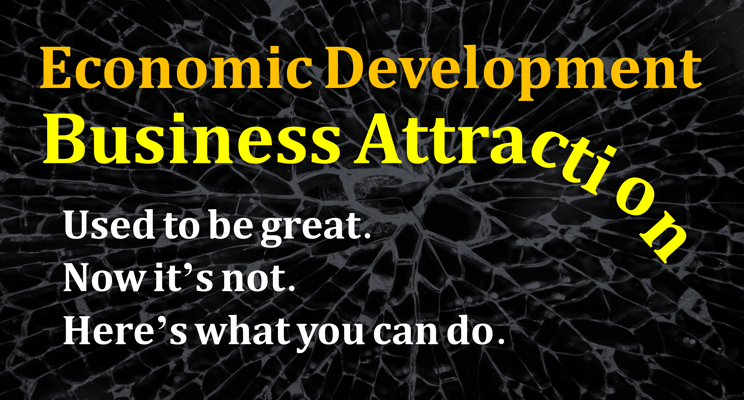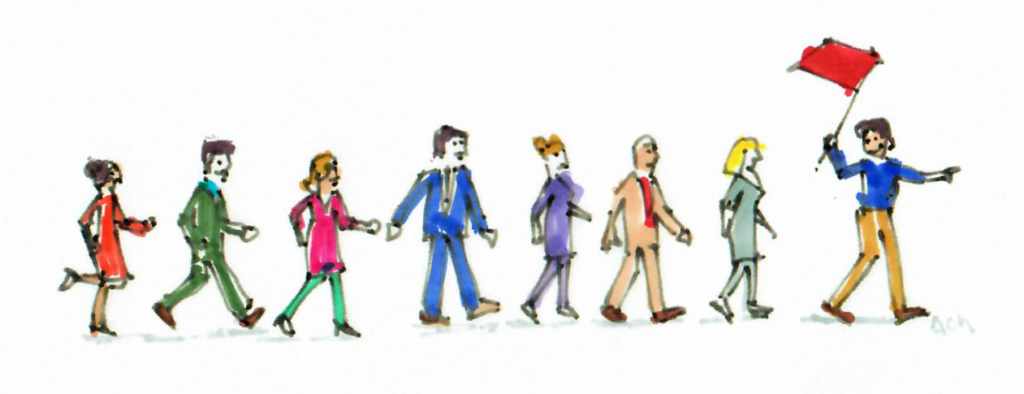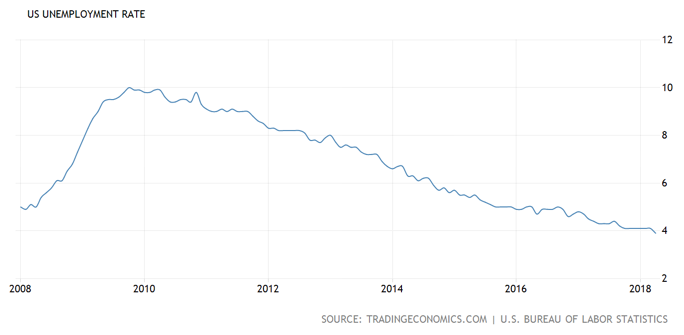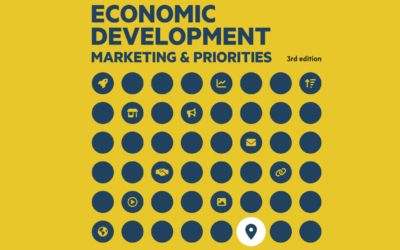
Business Attraction Used to Be Great for Economic Development. Now It’s Not. Here’s What You Can Do.
Business attraction as a strategy for economic development used to be wonderful. But today it is becoming a liability putting economic developers reason for existence at risk.
Business attraction has historically been at the core of many economic development organization (EDO) activities. For many EDOs, especially regional public-private-partnerships (PPP), it is their exclusive activity. The reason for this focus has been because of the desire to bring in more jobs from company relocations and expansions so that residents of the community could have access to more jobs. This process would then bring down the unemployment rate, increase economic activity, and grow wealth.
The good news is that, today, the United States unemployment rate is low. The new problem for companies is that the labor force is so tight because of low unemployment that they struggle to find available workers with the skills required for the job.
Economists have traditionally set full employment at a 5% unemployment rate because 5% represents the necessary availability and movement of people from old jobs to new ones. The unemployment rate is now around 4% meaning there is 20% less available workforce than there should be.
Also, the types of people that are most wanted by companies (those with good education, skills, and experience) are already employed. Therefore, hiring those workers is harder and requires attracting them from their current jobs, which typically requires paying them 10% to 20% more than what they are making at their current job. New job openings in a community brought by new companies being attracted by EDOs increase the competition and cost for workers and can result in needed positions going unfilled. This stunts the growth and productivity of existing companies.
Will existing companies be happy or angry that EDOs are bringing in new companies that will take their employees and increase their costs? They will obviously be angry about losing employees to new companies and higher salaries that reduce their profit.
This certainly matters for the private-sector funded economic development organizations. The reason for this is because these local companies may be funding a traditional economic development strategy that originally helped their company by improving the economy but is now hurting their company. Why fund something that hurts your company? You won’t.
This is raising a new question among decision makers and funders: In a tight labor economy should economic developers do business attraction at all?
This reality may make you nervous. If you are an economic developer that has exclusively worked on business attraction this may sound like the same news a specialty doctor gets when she discovers that a cure has been invented to the disease she has been treating their whole career. She thinks, “What am I going to do now?”
At 4% unemployment and a massive skilled labor shortage, the simple reality is that mayors, city councils, and corporations that fund economic development and define policy objectives, may conclude that business attraction may actually be harmful to the local economy. So, for the economic development directors that want to keep their job and remain relevant, they are going to have to change their focus, priorities, and budgets.
Here are 5 things effective economic developers can do to address our changing times:

1. Recruit quality labor
Labor attraction is the new business attraction. Are you stealing quality labor from other US cities in a zero-sum game? Yes you are, unless your strategy involves immigration. But you were stealing businesses from other cities as part of your business relocation strategy. If that wasn’t a moral dilemma before it isn’t likely to be one now.
What you can do:
Figure out what your community has that quality employees would want enough to relocate to your city. If you have it, market it. If you don’t have it, create it. This could include things like affordable housing, quality public transportation, excellent schools, short commutes, access to parks, vibrant nightlife, great weather, or other quality of place amenities. If you are delivering quality employees to your local businesses it’s going to make them happy and your economy more robust.

2. Focus on entrepreneurship and small businesses
Local businesses contribute more to your local economy than out-of-town businesses. This happens because the owners live in your community and are more likely to buy (for their business and themselves) in your community which results in a larger economic multiplier. The dollars the business make get re-spent locally.
What you can do:
Deliver easy and affordable small business services. You can do this through 1. online software you can implement and 2. existing programs you can promote.
- One of the easiest, fastest, and most affordable things you can do to provide entrepreneurship and small business assistance it to provide your local entrepreneurs with market research and business intelligence on your website so they can make smarter decisions how to start, optimize, or grow their companies. This can be simply implemented by adding SizeUp LBI software to your website. Numerous EDOs are already doing this.
- Existing programs provided by SBA, SCORE, SBDC, and community colleges provide classes and individual assistance for entrepreneurs and small businesses. Because these services are all located all over the country they are already in or nearby your community. You can help promote these services and work with the organizations to make sure their courses are aligned with your local businesses’ needs.

3. Retain local businesses
Business Retention and Expansion (BRE) has been the ugly sibling of business attraction. It never gets the big headlines in the local media because “we didn’t lose 500 jobs” doesn’t excite people the way “We won 100 new jobs from an out-of-town company” does. But as all great sports coaches will tell you, defense wins championships. BRE is economic development defense. It’s your local businesses that create almost all of the net new jobs and because they are local the economic impact is greater.
What you can do:
BRE is reinventing itself and pushing its way to the front of the economic development profession. Unlike business attraction, which is showing weakness as a strategy during robust economies with low unemployment, whether economic times are good or bad, BRE is a good solution. Also, it’s publicly popular because elected officials are always going to look good implementing programs to help local businesses.
Two of the major innovations in BRE are coming from the effective use of technology and data.
- An innovation being adopted by numerous US EDOs is Economic Gardening, which is a process of the EDO providing staff consulting to fast-growing companies through the use of databases, software-driven analysis, and making connections. This process focuses on a few companies that show the greatest potential for growth and job-creation. It requires research staff expertise and subscriptions to needed software and databases.
- Another innovation is the use of online software that uses big data, computing, and algorithms to be able to provide analytical insights customized to the local businesses that they can access on your EDO’s website. Because this program is computerized it can be provided to all of your local businesses and requires no staff time other than to promote the service being available on your website.

4. Workforce development
Improving the quality of your local labor force and developing the needed skills of the businesses in your community is already happening. It’s being done by your local community colleges, public schools, universities, workforce development organizations, trade unions, and the companies that internally train their workers.
What you can do:
Economic developers have often seen workforce development professional as the ones responsible for this and have left it to them. But this often results in a disconnect between the businesses that economic developers are constantly in contact with and the workforce development professionals working with people to train or retrain them for jobs. Economic developers and workforce development professionals can align themselves through cooperation so there is a clearer path to making sure that the skills people are learning are aligned with the needs of the companies with which economic developers are working. Organizations like IEDC provide training for economic development professionals on the topic of workforce development.

5. Improve your quality of place
Do you want to live somewhere that has nice amenities and makes your quality of life better? Everyone does but this is especially important to your workforce of the present, which is the millennial generation. Research shows that they choose where they want to live before the place they want to work (Source: Live First, Work Second by Rebecca Ryan). Having quality experiences is more important to them than what they own (Source: GfK).
What you can do:
Economic developers have traditionally been focused on transactions and deals but improving the quality of the place in your community requires collaboration with new partners including city planners, main street organizations, and business improvement districts. Your “product” in economic development is your community and all the things that are in it. Today, your labor force wants a community that has amenities and experiences including festivals, street art, sports, live events, 3rd spaces, and nightlife. If you aren’t expanding to include actively developing quality of place in your economic development efforts you are contracting your opportunity to attract and retain a quality labor force.
About the Author: Mark Hays has more than a decade of experience working with small businesses through Chambers of Commerce and Economic Development Organizations. Mark is Director of Business Development at SizeUp.




